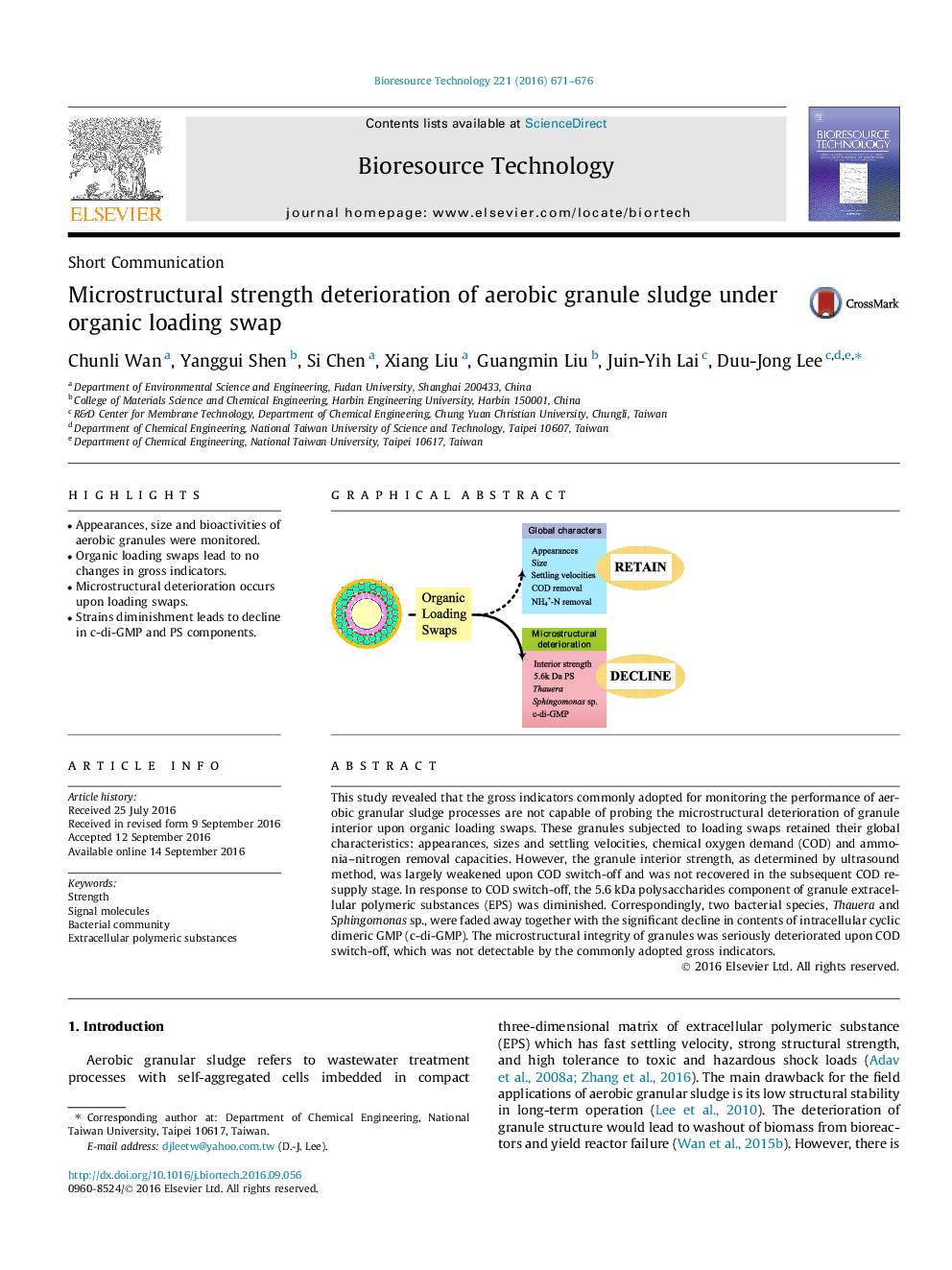| Article ID | Journal | Published Year | Pages | File Type |
|---|---|---|---|---|
| 4998110 | Bioresource Technology | 2016 | 6 Pages |
â¢Appearances, size and bioactivities of aerobic granules were monitored.â¢Organic loading swaps lead to no changes in gross indicators.â¢Microstructural deterioration occurs upon loading swaps.â¢Strains diminishment leads to decline in c-di-GMP and PS components.
This study revealed that the gross indicators commonly adopted for monitoring the performance of aerobic granular sludge processes are not capable of probing the microstructural deterioration of granule interior upon organic loading swaps. These granules subjected to loading swaps retained their global characteristics: appearances, sizes and settling velocities, chemical oxygen demand (COD) and ammonia-nitrogen removal capacities. However, the granule interior strength, as determined by ultrasound method, was largely weakened upon COD switch-off and was not recovered in the subsequent COD re-supply stage. In response to COD switch-off, the 5.6Â kDa polysaccharides component of granule extracellular polymeric substances (EPS) was diminished. Correspondingly, two bacterial species, Thauera and Sphingomonas sp., were faded away together with the significant decline in contents of intracellular cyclic dimeric GMP (c-di-GMP). The microstructural integrity of granules was seriously deteriorated upon COD switch-off, which was not detectable by the commonly adopted gross indicators.
Graphical abstractDownload high-res image (146KB)Download full-size image
